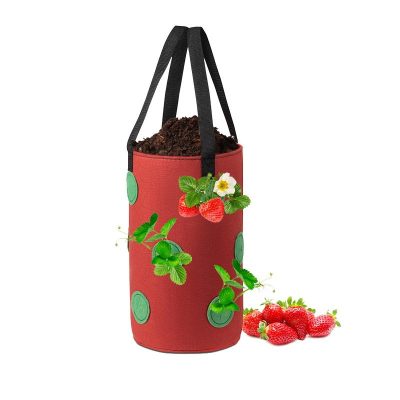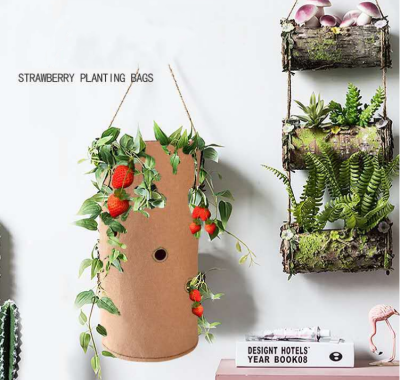Hanging grow bags are an excellent space-saving solution for vertical gardening, allowing you to grow plants in small or limited spaces. Here are some tips for using hanging grow bags effectively:
- Choose the Right Hanging Grow Bags: Select hanging grow bags made from durable materials that provide good drainage and aeration for the plants. Look for bags with reinforced handles or straps for secure hanging.
- Determine the Hanging Location: Find a suitable location for hanging the grow bags. Consider factors such as sunlight availability, accessibility for watering and maintenance, and the weight-bearing capacity of the hanging structure.
- Prepare the Grow Bags: Before planting, ensure the grow bags have drainage holes at the bottom. If they don’t have pre-punched holes, create them using a sharp object. Proper drainage is essential to prevent waterlogging and promote healthy root development.
- Fill with Potting Mix: Fill the grow bags with a well-draining potting mix, leaving enough space for the plants and watering. Gently firm the potting mix to remove any air pockets.
- Planting: Place the plants into the grow bags, following the specific planting instructions for each plant type. Ensure they are positioned securely and at the appropriate depth. If needed, use additional support like stakes or trellises for vining plants.
- Watering: Water the grow bags thoroughly after planting to settle the potting mix. Make sure water drains freely from the drainage holes. Check the moisture level regularly and water as needed, ensuring the potting mix remains evenly moist but not waterlogged.
- Sunlight Exposure: Hang the grow bags in a location that provides adequate sunlight for the plants’ requirements. Most plants need a minimum of 6 hours of direct sunlight per day. If necessary, adjust the height or position of the hanging bags to optimize sunlight exposure.
- Fertilization: Depending on the plant’s nutrient needs, fertilize the plants in the grow bags as recommended. Use a balanced, water-soluble fertilizer specifically formulated for container gardening. Follow the instructions for application rates and frequency.
- Regular Maintenance: Monitor the health and growth of the plants in the hanging grow bags. Prune, trim, or provide additional support as needed to maintain plant shape and prevent overcrowding. Remove any dead or damaged plant parts promptly.
- Watering Considerations: Hanging grow bags may dry out more quickly compared to traditional containers. Monitor the moisture level regularly and adjust your watering schedule accordingly. Water thoroughly when needed, ensuring that water reaches all parts of the root system.
- Rotate and Replant: To maintain soil health and prevent the buildup of pests and diseases, consider rotating the plants in your hanging grow bags each growing season. Replant with different plant varieties or refresh the potting mix.
- Check Hanging Stability: Regularly inspect the hanging mechanism and ensure it remains secure and stable. Avoid overloading the hanging structure and regularly check for any signs of wear or weakness.
By following these tips, you can effectively utilize hanging grow bags for vertical gardening, maximizing your growing space and creating a beautiful and productive garden.








